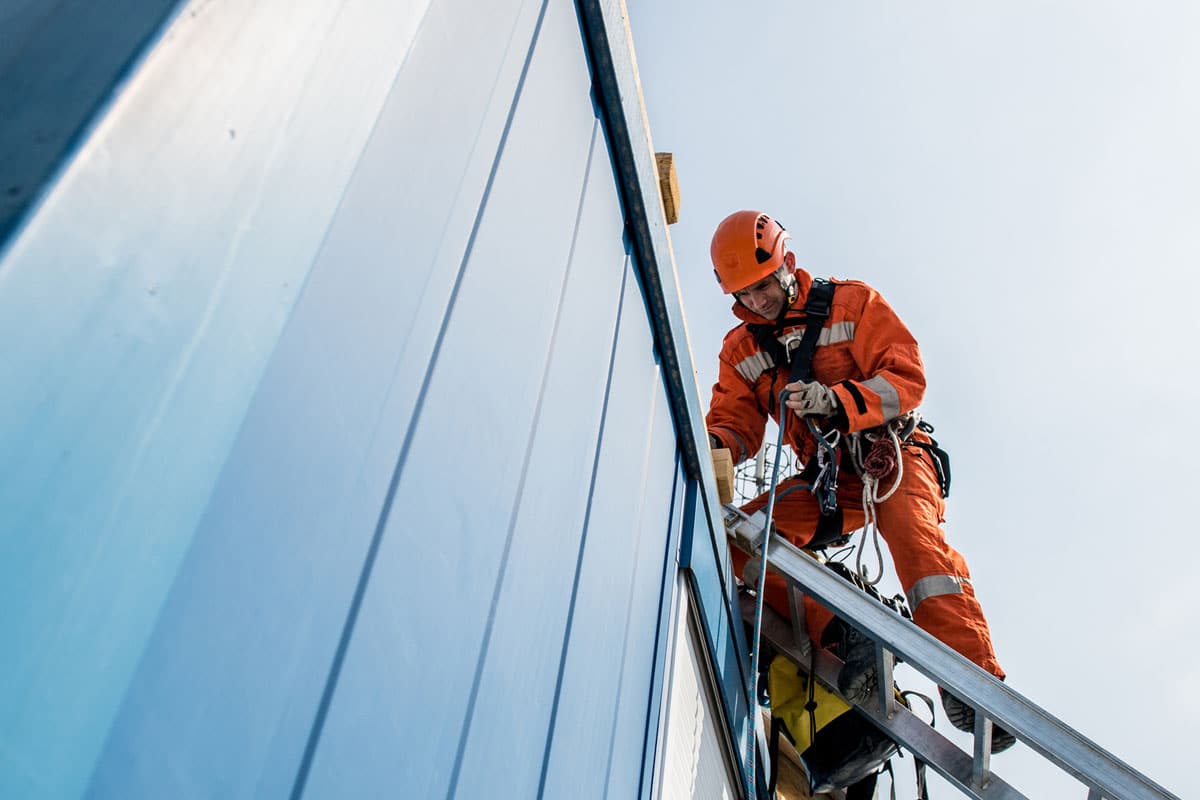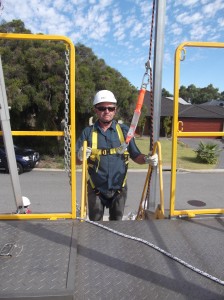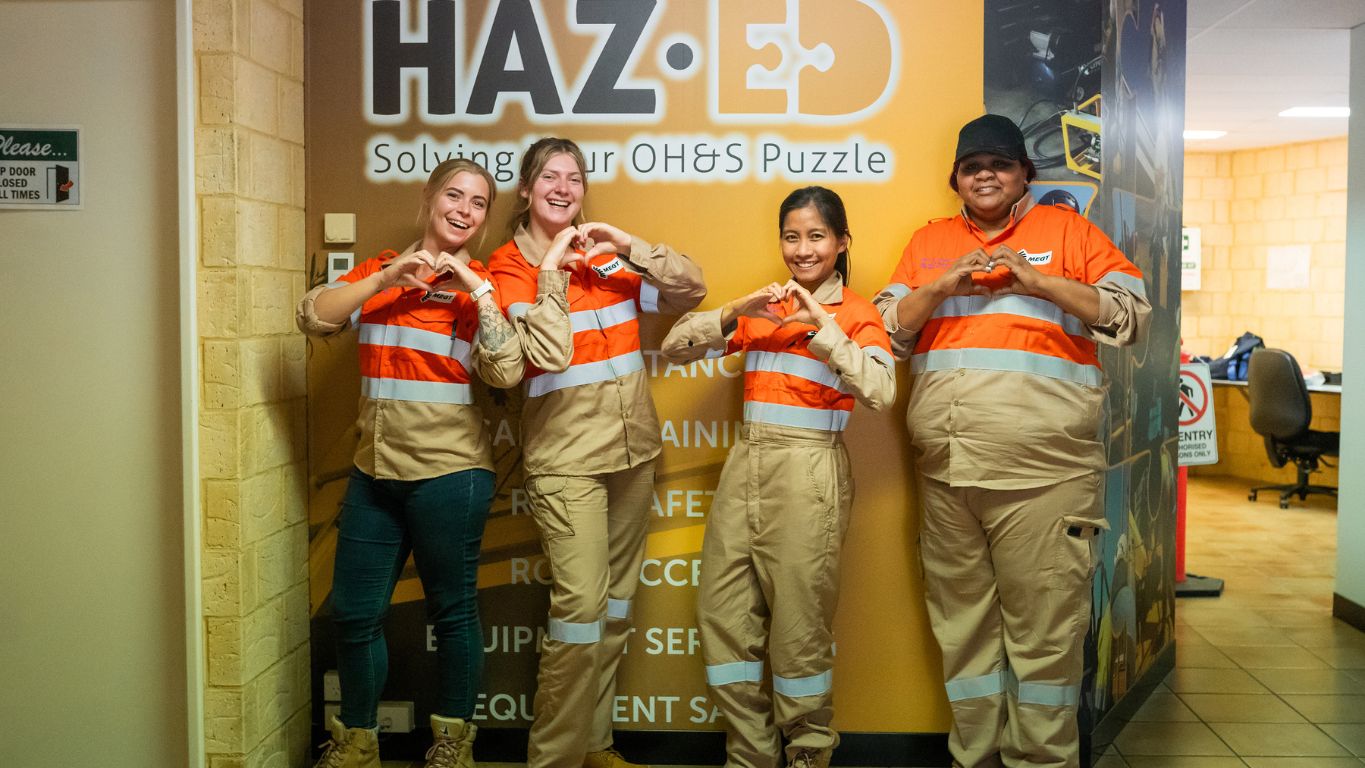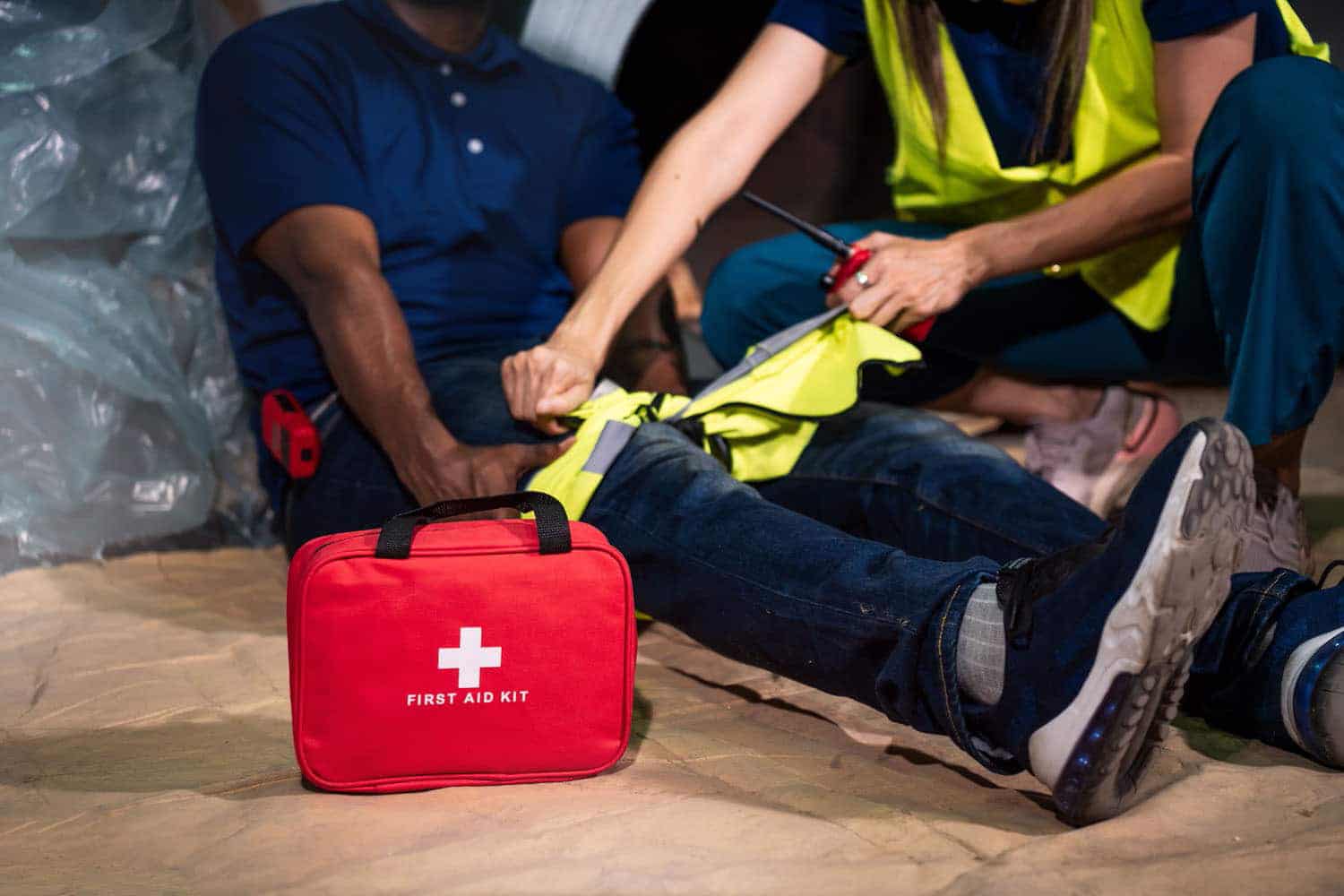
 18 April 2021
18 April 2021This information is a reference guide to sources of information relating to work at heights, mostly from SAI Global Limited (saiglobal.com)
This document is not intended to be exhaustive and readers should be aware that as time passes, there may be material published which does not appear in this guidance note and any internet links given may become obsolete.
All advice or information contained in publications by SAI Global Limited or found on haz-ed.com.au is intended for users who will evaluate the significance of the advice or information, including its limitations, and take responsibility for its use and application.
The information contained in this material has been compiled by Haz-ed.com.au from information that is already in the public domain. The material is intended to provide guidance but does not interpret and apply the law to particular circumstances and cannot be relied upon as advice.
Australian standards and Australian/New Zealand standards
AS 1418.13 Cranes (including hoists and winches) – Building maintenance units
http://infostore.saiglobal.com/store/details.aspx?ProductID=226299

AS/NZS 1576 Scaffolding – General requirements
http://infostore.saiglobal.com/store/details.aspx?ProductID=1391358
Sets out design and operational requirements for scaffolding, except trestle scaffolding, portable ladder intended to be used as working platforms and elevating working platforms.
AS/NZS 1657 Fixed platforms, walkways, stairways and ladders—Design, construction and installation
http://infostore.saiglobal.com/store/details.aspx?ProductID=1694271
Sets out requirements for the design, selection, construction and installation of fixed platforms, walkways, stairways and ladders that are intended to provide safe access to places used by operating, inspection, maintenance and servicing personnel.
AS/NZS 1891.1 Industrial fall-arrest systems and devices—Harnesses and ancillary equipment
http://infostore.saiglobal.com/store/details.aspx?ProductID=362326
Specifies requirements for the materials, design, manufacture and testing of harnesses, lanyards, pole straps and associated equipment including connecting devices and personal energy absorbers for industrial fall-arrest purposes.
Scope
This Standard specifies requirements for the materials, design, manufacture and testing of harnesses, lanyards, pole straps and associated equipment including connecting devices and personal energy absorbers for industrial restraint and fall-arrest purposes.
AS/NZS 1891.2 supp:1-2001 Industrial fall-arrest systems and devices—Horizontal lifeline and rail systems
http://infostore.saiglobal.com/store/details.aspx?ProductID=362364
Abstract
Specifies design and performance requirements for systems and associated component hardware for horizontal lifelines and rails used for fall-arrest purposes. The Standard covers systems using either rigid rails or flexible lines. Test methods are given in appendices.
Scope
This Standard specifies design and performance requirements for systems and associated component hardware for horizontal lifelines and rails used for fall-arrest purposes. The Standard covers systems using either rigid rails or flexible lines. Test methods are given in Appendices.
NOTE: Prescribed configurations for horizontal lifelines which are deemed to comply with this Standard are specified in AS/NZS 1891.2 Supplement 1.
AS/NZS 1891.3 Industrial fall-arrest systems and devices—Fall-arrest devices
http://infostore.saiglobal.com/store/details.aspx?ProductID=362372
Abstract
Specifies requirements for the design and performance of fall-arrest devices comprising those which travel down either a fixed or flexible anchorage line, and those which pay out an anchorage line.
Scope
This Standard specifies requirements for the design and performance of fall-arrest devices comprising devices which travel along either a fixed or flexible anchorage line, and those which pay out an anchorage line.
AS/NZS 1891.4 Industrial fall-arrest systems and devices—Selection, use and maintenance
http://infostore.saiglobal.com/store/details.aspx?ProductID=1144766
Abstract
Specifies requirements and sets out recommendations for the selection, safe use and maintenance of industrial fall-arrest systems and devices based on the use of safety harnesses, horizontal life lines and rails, fall-arrest devices, and associated lanyards, connectors, anchorages and fittings.
Scope
This Standard specifies requirements and sets out recommendations for the selection, safe use and maintenance of industrial fall-arrest systems and devices based on the use of safety harnesses, horizontal life lines and rails, fall-arrest devices, and associated lanyards, connectors, anchorages and fittings, as follows:
(a) Selection Requirements and recommendations for determining the types of components of the system that would be appropriate to the envisaged usage.
(b) Safe use Requirements and recommendations relating to the safe practices to be followed in the use of components and assemblies.
(c) Maintenance Requirements and recommendations for inspection, storage, servicing and cleaning practices.
NOTE: This Standard provides guidance for the selection of equipment and safe use procedures for some but not necessarily all forms of height protection or all of the circumstances under which such equipment and procedures are used.
The selection and safe use of equipment used in total restraint or rope access is not covered by this Standard (see AS/NZS 4488.2 for selection and safe use of rope access equipment).
AS/NZS 1892 Portable ladders series
AS/NZS 1892.1:1996 Portable ladders – Metal
http://infostore.saiglobal.com/store/Details.aspx?ProductID=362399
AS 1892.2-1992 Portable ladders – Timber
http://infostore.saiglobal.com/store/Details.aspx?ProductID=252265
AS/NZS 1892.3:1996 Portable ladders – Reinforced plastic
http://infostore.saiglobal.com/store/Details.aspx?ProductID=362408
AS/NZS 1892.5:2000 Portable ladders – Selection, safe use and care
http://infostore.saiglobal.com/store/Details.aspx?ProductID=362416
AS/NZS 4142.3 Fibre ropes—Man-made fibre rope for static life rescue lines
http://infostore.saiglobal.com/store/details.aspx?ProductID=311234
Abstract
Specifies design, performance and marking requirements for man-made fibre ropes intended for use as static life rescue lines by rescue and emergency services.
Scope
This Standard specifies design, performance and marking requirements for man-made fibre ropes of sheath and core construction for use as static life rescue lines by life rescue organizations.
NOTE: In the context of this Standard ‘static’ refers to the design and performance characteristics of a rope and not to usage.1.1 SCOPE This Standard specifies design, performance and marking requirements for man-made fibre ropes of sheath and core construction for use as static life rescue lines by life rescue organizations.
NOTE: In the context of this Standard ‘static’ refers to the design and performance characteristics of a rope and not to usage.
AS/NZS 4389 Safety mesh
http://infostore.saiglobal.com/store/details.aspx?ProductID=382019
Abstract
Specifes the minimum requirements for the design, construction, testing and installation of safety mesh for use in domestic, commercial and industrial building applications.
Scope
This Standard specifies the minimum requirements for the design, construction, testing and installation of safety mesh for use in domestic, commercial and industrial building applications.
NOTE: Alternative methods for determining compliance with this Standard are given in Appendix A.
AS/NZS 4488 Industrial rope access systems series
AS/NZS 4488.1:1997 Industrial rope access systems – Specifications
http://infostore.saiglobal.com/store/Details.aspx?ProductID=384108
Abstract
Specifies requirements for materials and hardware for industrial rope access systems including fall protection.
Scope
This Standard specifies requirements for materials and hardware for industrial rope access systems including fall protection.
AS/NZS 4488.2:1997 Industrial rope access systems – Selection, use and maintenance
http://infostore.saiglobal.com/store/Details.aspx?ProductID=384126
Abstract
Specifies requirements and sets out recommendations for the selection, safe use and maintenance of industrial rope access system components and assemblies.
Scope
This Standard specifies requirements and sets out recommendations for the selection, safe use and maintenance of industrial rope access system components and assemblies, as follows:
(a) Selection Aspects to be taken into account in determining the types of components of the system which would be appropriate to the envisaged usage.
(b) Safe use Requirements and recommendations relating to the safe practices to be followed in the use of components and assemblies.
(c) Maintenance Essential inspection, storage and cleaning practices which are required or should be observed.
Performance requirements for the components of an industrial rope access system are given in AS/NZS 4488.1.
AS/NZS 4488.2 Industrial rope access systems—Selection, use and maintenance
https://infostore.saiglobal.com/store/details.aspx?ProductID=384126
Abstract
Specifies requirements and sets out recommendations for the selection, safe use and maintenance of industrial rope access system components and assemblies.
Scope
This Standard specifies requirements and sets out recommendations for the selection, safe use and maintenance of industrial rope access system components and assemblies, as follows:
(a) Selection Aspects to be taken into account in determining the types of components of the system which would be appropriate to the envisaged usage.
(b) Safe use Requirements and recommendations relating to the safe practices to be followed in the use of components and assemblies.
(c) Maintenance Essential inspection, storage and cleaning practices which are required or should be observed.
Performance requirements for the components of an industrial rope access system are given in AS/NZS 4488.1.
Application
The requirements and recommendations given in this Standard are intended to apply only to rope suspension work (see Preface). It is not intended to apply to any of the following:
(a) Persons engaged in rescue operations where such operations are their primary job occupation.
(b) Emergency services.
(c) Recreational activities, including paid workers such as guides and instructors involved in such activities.
(d) Other rope access work such as lead climbing or under-deck work.
AS/NZS 4576 Guidelines for scaffolding
https://infostore.saiglobal.com/store/details.aspx?ProductID=385128
Abstract
Gives practical guidance for the training and certification of scaffolders, the preparation of sites for scaffolding, and the safe selection, supply, erection, alteration, dismantling, maintenance, inspection and use of scaffolding and scaffolding equipment.
Scope
This Standard gives practical guidance for the training and certification of scaffolders, the preparation of sites for scaffolding, and the safe selection, supply, erection, alteration, dismantling, maintenance, inspection and use of scaffolding and scaffolding equipment.
AS 2550.16 Cranes—Safe Use—Mast climbing work platforms
https://infostore.saiglobal.com/store/details.aspx?ProductID=276361
Abstract
Specifies the requirements for the safe use of mast climbing work platforms as defined in AS 2549. It includes sections on proposed site use criteria, site-specific considerations, supplier’s information, site for erection, erection alteration and dismantling, commission testing and handover, operation and inspection testing and repair. Appendices give guidance on hazards, site inspection check list, handover certificate, record of training, operating instructions, logbook format and inspection and test format. It is intended for use with AS 2550.1 and AS 1418.16, which specifies the design requirements for mast climbing work platforms.
Scope
This Standard gives practical guidance for the selection, supply, erection, alteration, dismantling, commissioning, maintenance, inspection and safe use of mast climbing work platforms. It is complementary to AS 2550.1, but the requirements given herein take precedence over the corresponding requirements of AS 2550.1.
Application
This Standard shall apply to the safe use of MCWP as defined in AS 1418.16. The requirements in that Standard shall apply and no requirements given herein shall circumvent them.
AS/NZS 4994 Temporary edge protection series
AS/NZS 4994.1 Temporary edge protection – General requirements
https://infostore.saiglobal.com/store/details.aspx?ProductID=1137929
Abstract
Sets out requirements for the design, manufacture and testing of equipment that is intended to provide protection at the roof edge to workers installing, altering, repairing or removing cladding on housing and residential buildings having roof slopes of not more than 35° to the horizontal.
Scope
This Standard specifies requirements for the design, manufacture and testing of equipment that is intended to provide temporary edge protection for persons working on roofs of buildings having slopes not greater than 35° to the horizontal and for other exposed edges, prior to the installation of the permanent walling materials.
NOTES:
1 This Standard does not apply to the containment of materials on residential roofs.
2 Edge protection is used on buildings that are being constructed, renovated, extended, altered or maintained.
3 Where roof slopes exceed 35 degrees, roof edge protection should be specifically designed. In some instances it may be appropriate that some other form of restraint may be required to avoid risk of excessive impact.
4 AS/NZS 4494.2 specifies requirements for the installation and dismantling of roof edge protection.
5 AS/NZS 4494.3 specifies requirements for the installation and dismantling of edge protection of other edges prior to the installation of the permanent walling materials.
Application
Persons using this Standard are advised to familiarize themselves with the relevant specific statutory requirements regarding occupational health and safety legislation, scaffolding and working at heights.
NOTES:
1 In Australia, housing and residential buildings are considered to be of not more than three habitable storeys, based on Classes 1, 2 and 10 of the Building Code of Australia (BCA).
2 In New Zealand, such buildings within the definition of a housing unit are as per the New Zealand Building Code (NZBC).
AS/NZS 4994.2 Temporary edge protection – Roof edge protection – Installation and dismantling
https://infostore.saiglobal.com/store/details.aspx?ProductID=1139884
Abstract
Sets out requirements and gives guidance for the selection, installation, use and dismantling of roof edge protection for housing and residential buildings.
Scope
This Standard specifies requirements and gives guidance for the selection, installation, use and dismantling of roof edge protection complying with AS/NZS 4994.1. It covers temporary roof edge protection for persons working on roofs of housing and residential buildings and commercial buildings having roof slopes of not greater than 35° to the horizontal.
NOTE: This document is not a substitute for any Standard applying to scaffolding.
Application
Persons using this Standard are advised to familiarize themselves with the specific statutory requirements of States and Territories of Australia and New Zealand regarding occupational health and safety legislation, scaffolding and working at heights.
Users are reminded to check if the relevant legislation contains a requirement to also control the risks associated with falling objects.
AS/NZS 4994.3 Temporary edge protection – Installation and dismantling for edges other than roof edges
https://infostore.saiglobal.com/store/details.aspx?ProductID=1383618
Scope
This Standard specifies requirements and gives guidance for the selection and installation of edge protection complying with AS/NZS 4994.1, for persons working near an opening in a floor, or near a platform edge or floor edge prior to the installation of the permanent walling materials.
NOTES:
1 Edge protection is used on buildings that are being constructed, renovated, extended, altered or maintained.
2 Part 2 of this Standard specifies requirements for the installation and dismantling of roof edge protection.
Application
Persons using this Standard are advised to familiarize themselves with specific statutory requirements of States, Territories and New Zealand regarding OH & S legislation, scaffolding and working at heights.
NOTES: Users are reminded to check if the relevant legislation contains a requirement to also control the risks associated with falling objects.
Recent posts
 4 April 2024
4 April 2024Haz-Ed Celebrates International Women’s Day: A Commitment to Excellence
 16 October 2023
16 October 2023OH&S Overview – Understanding Occupational Health and Safety
 20 August 2023
20 August 2023

